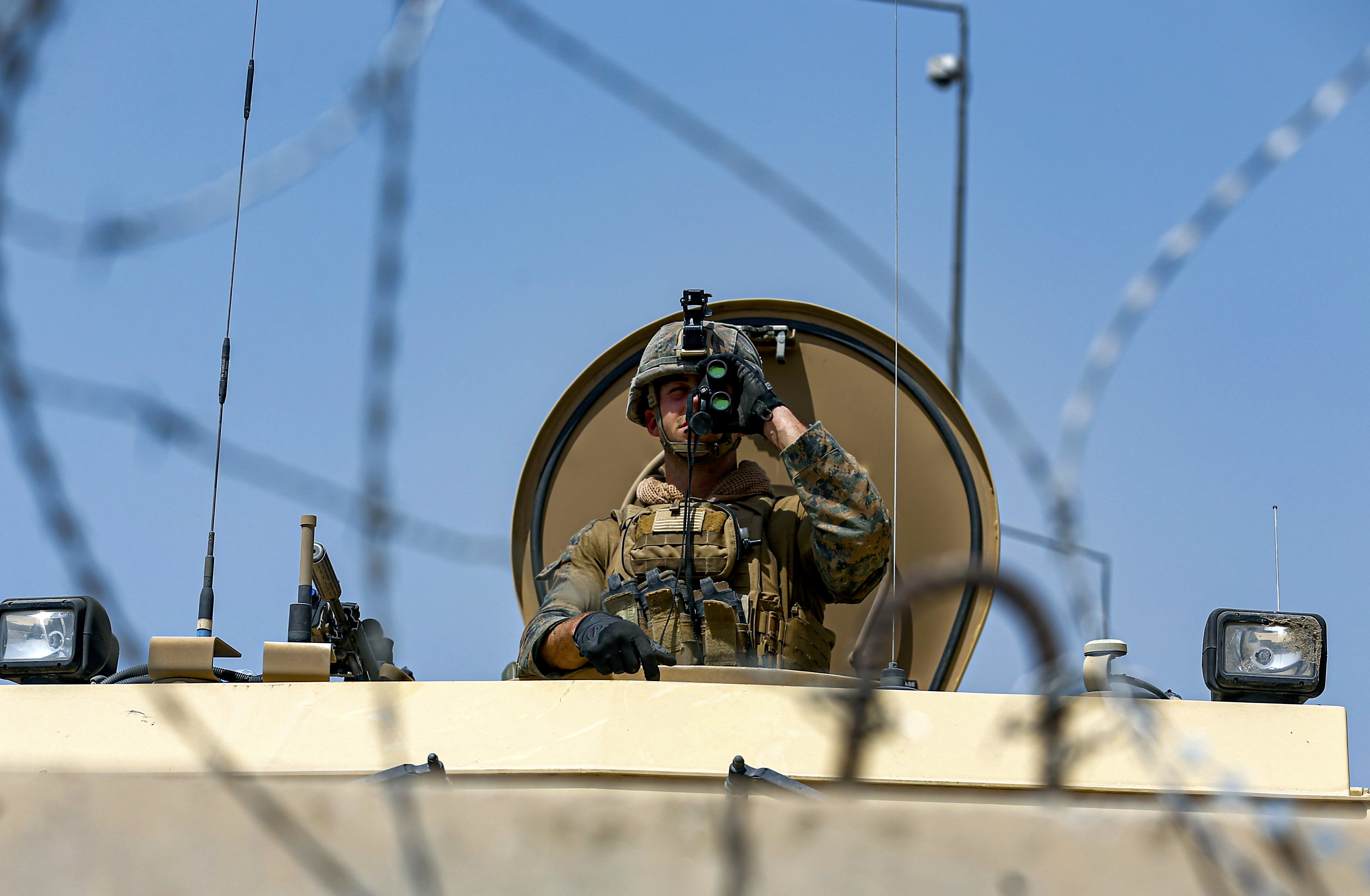
One explosive device detonation caused the death of 13 U.S. troops in an attack during the United States withdrawal from Afghanistan, according to U.S. Central Command officials.
After conducting an investigation into the August attack at Hamid Karzai International Airport in Kabul, officials concluded that one explosive device was detonated near Abbey Gate and that none of the deaths and injuries sustained were due to gunshot wounds.
“At the time, the best information we had in the immediate aftermath of the attack indicated that it was a complex attack by both a suicide bomber and ISIS-K gunman,” CENTCOM chief Gen. Kenneth McKenzie told reporters today. “We now know that the explosively fired ball bearings caused wounds that looked like gun shots, and when combined with a small number of warning shots, that lead many to assume that a complex attack had occurred.”
The investigation included interviews with more than 100 witnesses, in addition to medical examiner expertise, explosive experts and the analysis of footage an MQ-9 drone took shortly after the attack, to inform its conclusions, McKenzie said. Another official said the investigative team did not talk to Afghans who were on the ground when the attack occurred because the U.S. had already left Afghanistan by the time it launched the investigation.
“The investigation found that a single explosive device killed at least 170 Afghan civilians and 13 U.S. service members by explosively directing ball bearings through a packed crowd and into our men and woman at Abbey Gate,” McKenzie said. “The disturbing lethality of this device was confirmed by the 58 U.S. service members who were killed and wounded, despite the universal wear of body armor and helmets that did stop ball bearings that impacted them but could not prevent catastrophic injuries to areas not covered.”
Eleven Marines, one Navy hospital corpsman and one soldier were killed when the device exploded during the final days of the U.S. withdrawal from Afghanistan, as crowds of people massed at HKIA hoping to get evacuated after Kabul fell to the Taliban.
“The investigation found no definitive proof that anyone was ever hit or killed by gun fire – either U.S. or Afghan. This conclusion was based upon the careful consideration of sworn testimony of more than a hundred witnesses, and especially those witnesses in observation towers – both American and British – who were in locations unaffected by the blast and that had commanding views of the scene both before, during and after the explosive attack,” McKenzie said.
During the finals days of the withdrawal, individuals hoping to get evacuated used secondary routes to the airport as one of the Taliban checkpoints became increasingly hostile and difficult to get through, Marine Corps Lt. Col. John Naughton, one of the investigators, told reporters.
Naughton said U.S. officials and service members coordinated with both private groups and on-the-ground intelligence assets to help individuals get around the Taliban checkpoints, including by providing maps of alternative routes.
“As a result of our investigation, we assess that it is highly likely the attacker from 26 August utilized one of the alternative ingress routes to access the Abbey Gate area because he would not have had to pass through a Taliban checkpoint and he would not have had to show identification to get close enough to U.S. service members to detonate his device,” Naughton said.
Asked if the attack at HKIA was preventable, two officials who lead the investigation said it was not.
“Based upon our investigation at the tactical level, this was not preventable. And the leaders on the ground followed the proper measures and any time there was an imminent threat warning, they followed the proper procedures,” Army Brig. Gen. Lance Curtis said. “They lowered their profile, they sought cover and, at times ,they even ceased operations at the gate.”
Two thousand Marines trained in non-combatant evacuation operations from the 24th Marine Expeditionary Unit based in Camp Lejuene, N.C., were dispatched to the airport to help with the withdrawal. At the time, the Marines were deployed with the three-ship Iwo Jima Amphibious Ready Group. Elements of the Marine Special Purpose Marine Air-Ground Task Force-Crisis Response-Central Command with elements from the 2nd Battalion, 1st Marines from Camp Pendelton, Calif., were also part of the contingent sent to support the evacuation. The Army sent soldiers from Fort Bragg, North Carolina’s 82nd Airborne Division to help with security at HKIA, in addition to unspecified special operations units.
ISIS Khorsan, an ISIS affiliate that operates in Afghanistan and Pakistan, claimed responsible for the attack at HKIA shortly after it occurred. Curtis said the FBI is performing its own investigation into the identity of the bomber.





